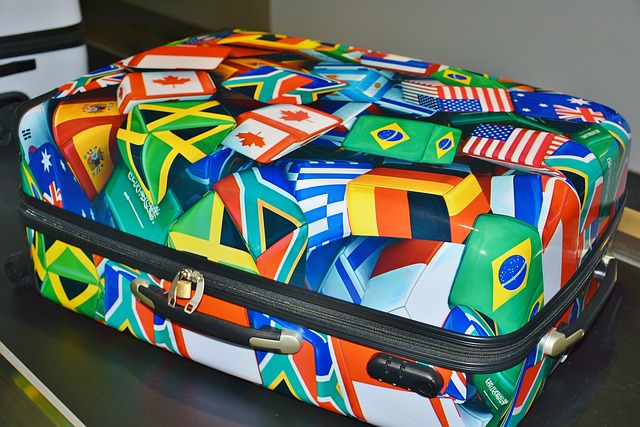Packing Smart for Extended Global Journeys
Long trips across multiple countries require planning beyond a weekend escape. This article outlines practical approaches to itineraries, visas, packing essentials, mobility across transport modes, managing layovers and airfare choices, and real-world cost considerations to help you travel efficiently and sustainably.

Extended global journeys demand planning that balances flexibility, comfort, and compliance with local rules. Packing smartly reduces stress at airports, railways, and ports, and keeps logistics manageable across visas, customs, and changing climates. This article focuses on actionable strategies for itineraries, required documents, luggage choices, mobility considerations for intermodal travel, layover management, and cost benchmarks so you can travel longer without constant friction.
How to plan itineraries and visas?
When designing multi-country itineraries, build in buffer days for unexpected delays and visa processing times. Prioritize a clear route map that sequences nearby countries to reduce travel time and expense, and check entry requirements well before departure: some visas require proof of onward travel, financial means, or specific vaccinations. Maintain digital and printed copies of permits, visas, and confirmations, and use a single secure folder or app for itinerary documents. Confirm transit visa needs for layovers, especially when changing airports or leaving the terminal.
What to pack for extended travel?
Packing for a long trip means choosing versatile clothing, layered systems, and multi-use gear. Limit clothing to items that mix-and-match, focus on quick-dry fabrics, and include one formal option for unexpected events. Consolidate toiletries into travel-sized, refillable containers and keep prescription medications in original packaging with a doctor’s note if necessary. Select luggage that matches your route: a durable checked bag for long segments and a carry-on with organization for frequent transfers. A compact wash kit, a lightweight travel towel, and a small sewing kit extend clothing life on the road.
How to manage mobility across airports, railways, and cruises?
Intermodal travel requires attention to schedules, transfer times, and baggage rules. Reserve seats or cabins early for long-haul railways and cruises to secure connections and accessibility needs. At airports, verify whether your airline transfers checked luggage through to the final destination or if you must recheck during layovers. For cruises that begin in a different port city, account for arrival windows and potential overnight stays. Consider mobility aids or compact folding devices if you expect long walks or multiple transfers. Research local transport passes and apps to streamline city-to-port or city-to-station transfers.
How to handle layovers and airfare considerations?
When booking airfare, weigh nonstop convenience against cost savings from multi-segment itineraries that may better match your itinerary. Allow ample time for customs and immigration during layovers and factor in minimum connection times at specific airports. Choose fare types that include flexible change options if your plans may shift. Keep buffer days between major legs to safeguard against missed connections, and consider travel insurance that covers missed connections. For long layovers, research airport facilities, transit hotels, and nearby shelters that can reduce fatigue during long transits.
How to address customs, logistics, and safety?
Familiarize yourself with customs rules for every country on your route: duty-free allowances, restricted items, and declaration procedures vary. Keep an easy-to-access folder for passports, vaccination records, and declarations. Secure valuables with travel locks and use discreet money storage, spreading funds across cards and cash. For logistics, pre-book important segments like trains or ferries during peak seasons. Prioritize safety by staying informed about local advisories, registering with consular services where available, and carrying emergency contact information in multiple formats.
Practical costs: airfare, rail, cruises, and baggage fees
Real-world budgeting for extended travel should include airfare, intercity rail or cruise segments, and recurring fees such as checked baggage. The figures below are general estimates intended to help build a travel budget; actual costs vary by season, booking lead time, routing, and provider policies. The table highlights common providers and typical cost ranges travelers encounter.
| Product/Service | Provider | Cost Estimation |
|---|---|---|
| Intercontinental round-trip economy airfare | Emirates / Delta / British Airways | $600–$1,500 |
| Eurail Global Pass (1 month) | Eurail | $300–$700 |
| 7-night mid-range cruise (per person) | MSC / Carnival | $600–$1,400 |
| Checked baggage fee (per bag, one-way) | Major airlines | $25–$100 |
| Carry-on luggage (new, durable) | Samsonite / Travelpro | $80–$350 |
Prices, rates, or cost estimates mentioned in this article are based on the latest available information but may change over time. Independent research is advised before making financial decisions.
Conclusion
Smart packing and careful planning smooth many challenges of extended global travel. Thoughtful itineraries, up-to-date visa checks, compact and versatile packing, and awareness of mobility across airports, railways, and cruises all reduce friction. Including realistic cost estimates in your planning helps maintain flexibility, while attention to customs, logistics, and safety protects time and resources so you can focus on the experience rather than constant problem-solving.





